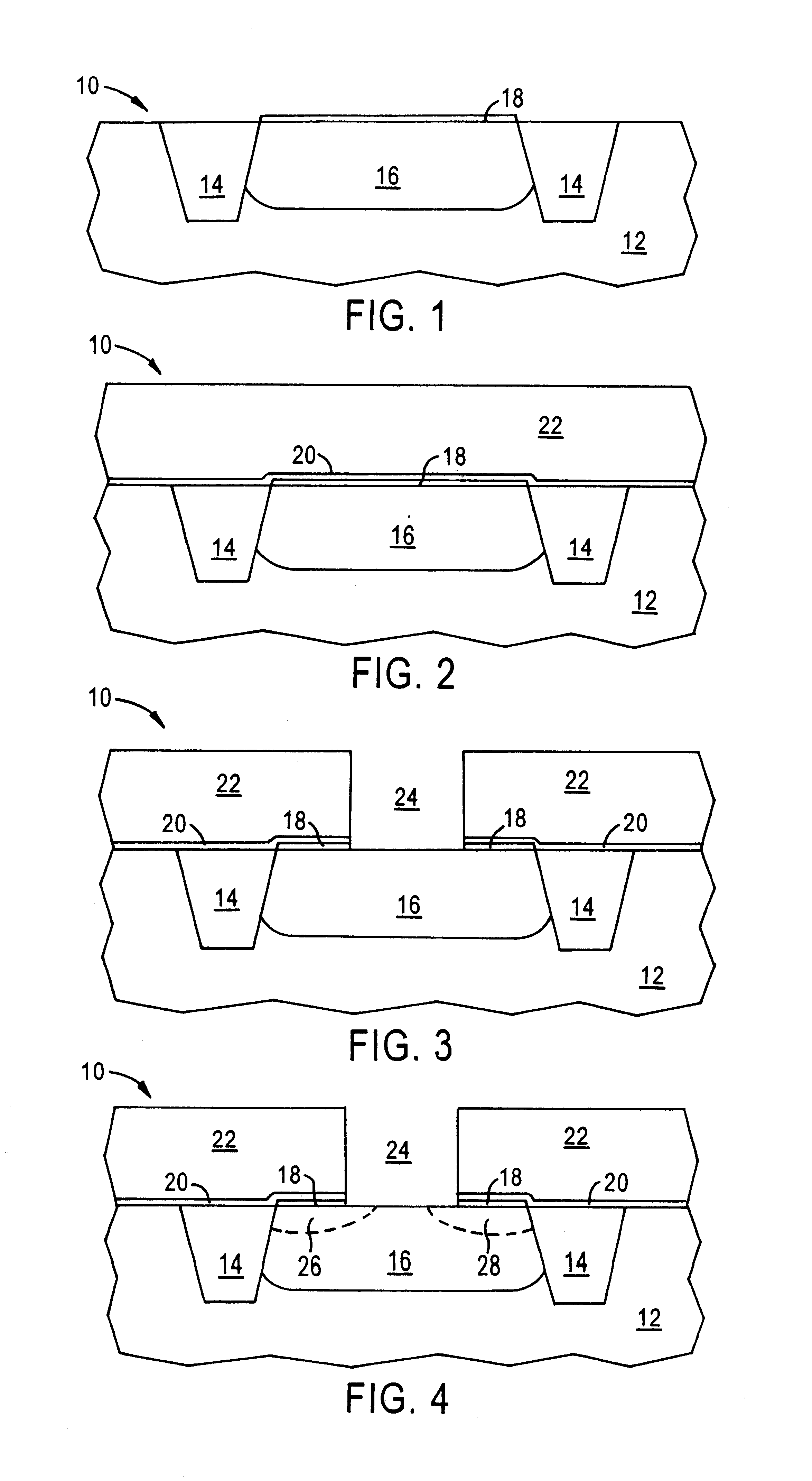Doping of thin amorphous silicon work function control layers of MOS gate electrodes
a technology of mos gate electrodes and mos, which is applied in the direction of basic electric elements, electrical apparatus, and semiconductor devices, can solve the problems of reducing performance by about 15% or more, adversely affecting polysilicon gates, and increasing the effective gate oxide thickness ("eot")
- Summary
- Abstract
- Description
- Claims
- Application Information
AI Technical Summary
Problems solved by technology
Method used
Image
Examples
Embodiment Construction
The present invention is based upon the discovery that thin, doped Si layers for use as work function control / adjust layers intermediate an in-laid metal electrode and an underlying thin gate insulator layer of a MOS transistor and / or CMOS device, can be readily formed by a process which prevents, or at least substantially reduces, damage to the thin gate insulator layer and doping of the underlying channel region within the semiconductor substrate characteristic of the conventional dopant implantation-based methodology. A key feature of the present invention is the initial formation of a thin amorphous Si ("a-Si") layer over the thin gate insulator layer, rather than a polycrystalline Si layer as in conventional practice. The thin amorphous Si layer, in contrast with the conventional polycrystalline Si layer, facilitates doping by means of a low energy process, e.g., plasma doping at a low sheath voltage, and thus advantageously avoids, or at least minimizes, the damage to the thin...
PUM
 Login to View More
Login to View More Abstract
Description
Claims
Application Information
 Login to View More
Login to View More - R&D
- Intellectual Property
- Life Sciences
- Materials
- Tech Scout
- Unparalleled Data Quality
- Higher Quality Content
- 60% Fewer Hallucinations
Browse by: Latest US Patents, China's latest patents, Technical Efficacy Thesaurus, Application Domain, Technology Topic, Popular Technical Reports.
© 2025 PatSnap. All rights reserved.Legal|Privacy policy|Modern Slavery Act Transparency Statement|Sitemap|About US| Contact US: help@patsnap.com



